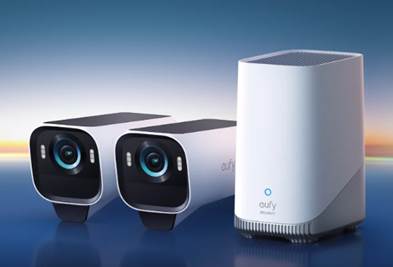Dust
accumulates on outdoor security cameras every day, gradually reducing their
clarity and effectiveness. Rain, wind, and temperature fluctuations further
challenge their durability. Without proper care, even the most advanced cameras
can fail prematurely, leaving your property vulnerable. Regular maintenance
isn’t just about fixing issues—it’s about preventing them. A well-maintained
camera delivers sharper footage, fewer false alerts, and reliable performance
year-round. It also saves money by avoiding costly replacements. In this
article, we’ll explore practical steps to keep your outdoor security cameras functioning like new.

How Often Should You Clean Outdoor Security
Cameras?
Signs Your Camera Lens Needs Cleaning
Blurry
or hazy footage is the most obvious sign that your camera lens needs attention.
You might notice glare or streaks in daytime videos, or infrared night vision
appearing foggy. Spiderwebs or insects nesting near the lens can also obstruct
the view. Pollen buildup in spring or dust storms in summer often demand more
frequent cleaning. If motion alerts trigger less frequently or miss activity,
dirt could be interfering with sensors. Regular visual inspections—monthly for
most climates, biweekly in extreme conditions—help catch these issues early.
Ignoring them risks permanent damage to lens coatings or internal
components.
Step-by-Step Guide to Safely Clean Camera Lenses
Start
by powering off the camera to avoid electrical hazards. Use a soft microfiber
cloth to gently wipe away loose debris; avoid paper towels that can scratch the
lens. For stubborn grime, dampen the cloth with distilled water or a 50/50 mix
of water and isopropyl alcohol. Never spray liquid directly onto the lens, as
moisture can seep into housing. A cotton swab helps clean tight corners around
the casing. For cameras mounted high, use a ladder with stabilizers and
consider a lens cleaning kit with an extended brush. Dry the lens thoroughly
before reactivating the camera. Finally, test the feed to confirm clarity and
adjust angles if needed.

Protect Cameras from Weather and Environmental Damage
Outdoor
cameras face relentless sun, rain, and snow, which can degrade housing and
seals over time. Silicone covers or protective casings shield cameras from
direct UV rays, preventing plastic brittleness. Ensure the mounting bracket is
rust-resistant and tightened securely to withstand strong winds. Apply a
waterproofing spray to cables and connectors every six months. In freezing
climates, check for ice buildup that might obstruct the lens or interfere with
motion mechanisms. Position cameras under eaves or shades where possible, but
avoid overhangs that drip water directly onto the device. Regularly clear
leaves and debris from nearby gutters to prevent water damage.
Key Electrical and Connectivity Checks?
Inspecting Power Cables and Connections for Wear
Frayed
or exposed wires are a fire hazard and can disrupt power. Examine cables
monthly for chew marks from rodents or cracks from temperature swings. Secure
loose connectors with electrical tape or waterproof gel. For wired systems,
ensure junction boxes are sealed against moisture. Battery-powered models need
terminal checks for corrosion—clean contacts with a vinegar solution if needed.
Replace damaged cables immediately, opting for weatherproof replacements. If
your camera resets frequently, unstable power delivery could be the culprit.
Consider a surge protector for added safety during storms.
Testing Wi-Fi Signal Strength and Avoiding
Interference
Weak
Wi-Fi causes laggy feeds or disconnections. Use your phone to test signal
strength near the camera; if it’s below two bars, a Wi-Fi extender may help.
Keep cameras away from thick walls, metal surfaces, or appliances like
microwaves that cause interference. Dual-band routers reduce congestion by
switching between 2.4GHz and 5GHz frequencies. Update your camera’s firmware to
patch connectivity bugs. For critical areas, Ethernet-over-power adapters
provide a wired alternative without extensive cabling. Periodically reboot your
router to clear signal bottlenecks.
Ensure Proper Camera Positioning
Adjusting Angles to Avoid Blind Spots
Seasonal
changes like tree growth or new outdoor furniture can create blind spots. Test
coverage by walking through monitored zones while checking live feeds. Tilt the
camera downward slightly to focus on entry points rather than open sky. For
wide areas, pan-and-tilt models offer remote adjustments via app. Avoid
backlighting from windows or streetlights that obscure details. Revisit
positioning every 3–6 months or after landscaping changes.
Verifying Night Vision and Motion Detection
Accuracy
Test
night vision monthly by reviewing recorded footage for excessive graininess or
"whiteout" from IR reflection. Adjust sensitivity settings if pets or
passing cars trigger unnecessary alerts. Clean IR LEDs gently to maintain
range. For color night vision, ensure ambient lighting (e.g., porch lights)
complements the camera’s capabilities.
Conclusion
Consistent
upkeep ensures your outdoor security cameras remain a dependable first line of
defense. Whether deterring trespassers or monitoring deliveries,
well-maintained outdoor security cameras provide peace of mind. For those
seeking top-tier reliability, brands like eufy offer a wide range of
high-quality models tailored to diverse needs—from weatherproof designs to
advanced AI detection. Invest a little time in maintenance today to avoid
costly surprises tomorrow.
